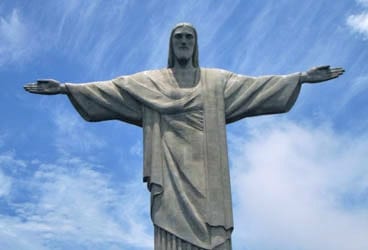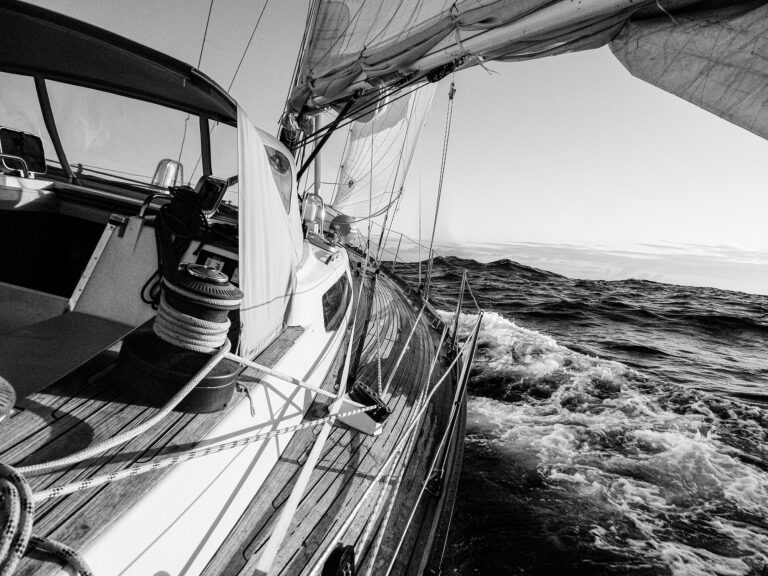
368 hw jesus
Long before we sailed out from the open ocean and into the harbor adjacent to the sultry Brazilian city of Rio de Janeiro, we spied the famous, striking statue atop the tall, craggy peak. It was the Christmas season, so it was especially poignant that our first real glimpse of Rio was the 125-foot effigy known locally as both Cristo Redentor-Christ the Redeemer, in Portuguese-and as Corcovodo, which is actually the name of the 2,300-foot crest on which it sits. By any handle, however, the outstretched arms of Jesus were a most welcome sight. We’d struggled to lay eyes upon them for what seemed like an eternity.
When skipper Mark Schrader laid out the original itinerary for our voyage “Around the Americas” (www.aroundtheamericas.org) aboard our 64-foot cutter, Ocean Watch, he’d budgeted exactly 24 days for the 3,500-nautical-mile passage from San Juan, Puerto Rico, to Rio, a daily average of 145 miles. It was, by far, the longest single leg of the 25,000-mile trip from and back to Seattle, Washington, but it seemed like a reasonable estimate.
It turned out to be highly wishful thinking.
When we finally made our way past the figurative shadow of Jesus, we’d been outbound from San Juan for close to six weeks. It had been, for the grand majority, a long, miserable, upwind slog in crummy seas against contrary currents. But the worst part had been the searing heat: Since leaving South Florida, our previous port before San Juan, we’d not had a single day when the cabin temperature in Ocean Watch didn’t top the 90 F mark. Negotiating the Northwest Passage had been a challenge, but in many aspects, it’d been an easier, more straightforward trip than the one across the equator to Brazil.
In hindsight, we didn’t do ourselves any favors in the course we took, choosing to hug the coast rather than tacking well offshore. (A seasoned sailing friend says that the proper way to sail from North America to Brazil is to head for the Canary Islands, and when you see them, turn right.) There were extenuating circumstances, as we had to make crew changes, but in retrospect, we made a hard voyage under any conditions extremely harder.
One of the best traits any offshore sailor can have, however, is a short memory, and much of the misery was instantly forgotten once Corcovodo loomed into view.
Frankly, we were somewhat unsettled as we sailed into Rio, having heard tales of rampant gangs and soaring crime. But we found nothing but friendly folks and wonderful sights there, and our slip at the Marina da Gloria was clean, safe, and centrally located. We managed to complete a few boat chores after the long slog southward, and even took a morning off to climb aboard the tram up to Cristo Redentor.
Considered by scholars to be the largest Art Deco statue in the world, it draws thousands of visitors each year and is certainly a powerful and spiritual symbol of Brazilian Catholicism. For the crew of Ocean Watch, it was also commanding and symbolic. As we trained our gaze aloft, we knew we’d finally made it to Rio, and now we could start to concentrate on Cape Horn.







